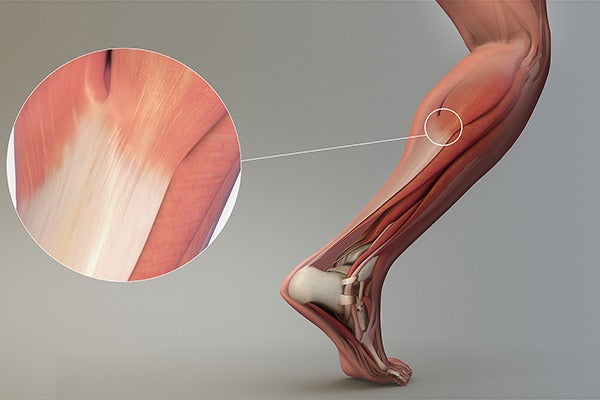This guest post was written by Dr. Kyle Anderson, orthopedic surgeon and team doctor for the Detroit Lions.
In this article:
If you’re visiting a sports medicine surgeon, there’s a good chance you may be in need of a surgery that will require attaching tendon to bone, such as a rotator cuff repair or an anterior cruciate ligament (ACL) reconstruction. The surgical process for reattaching and healing two different types of tissues (i.e. tendon to bone) differs from the process for two homogenous tissues (i.e. bone-bone or tendon-tendon). This article explains tendon-to-bone healing.

What are Bones and Tendons?
Let’s start with bones. Bones are hard tissue made up of proteins, minerals and vitamins and they provide shape, structure and mechanical support to our bodies. They also provide an environment for marrow, for the production of white blood cells, and act as a storage area for minerals, such as calcium.
A tendon is a fibrous connective tissue which attaches muscle to bone. The tendon allows the muscle to move the bone when it contracts. Though similar, tendons are not to be confused with ligaments, which are bands of strong elastic tissue around our joints that connect bone to bone, give our joints support, and limit their movement.
Tendon to Bone Healing
In some injuries, tendons or ligaments detach from bone leaving the entire structure unstable. For example in a serious rotator cuff injury, one of the tendons in your shoulder is completely separated from the bone. Tendon injuries often require surgery to reattach the two tissues together to relieve pain and restore the area to a full range of motion.
Tendon-to-bone healing is slower than bone fracture healing for two main reasons. First, the enthesis, the part of tendon which connects the bone, tends to have fewer blood vessels. Blood carries the essential biological components needed for healing. Therefore, surgical repair focuses not only on the tendon, but also on the surrounding soft tissues to augment the area with essential biological components.
Second, the difference between bone and tendon tissues requires the regeneration of the fibrocartilage zone. This zone is where mineralized collagen fibers from bone become continuous with non-mineralized collagen from tendon to efficiently transmit force from movement. Due to the natural complexity of this zone, it is slow to repair. One element that may help with tendon-to-bone repair is increasing calcification of the tendon to mimic bone-bone interaction.

In Conclusion
Special attention must be paid to the affected area to enhance recovery and return to a full range of motion. A typical rehabilitation plan will likely include stretching, strengthening exercises, massage and endurance activities. But patients can also take care with their diet to improve recovery. In particular patients can increase dietary intake of active enzymes, from fruits and fermented foods, that are active in tendon repair. To aid with calcification of the tendon, patients can increase intake of calcium and phosphorus-rich foods. Lastly, patients can eat foods rich in animal collagen, such as bone stock soups (i.e. pho soup).



